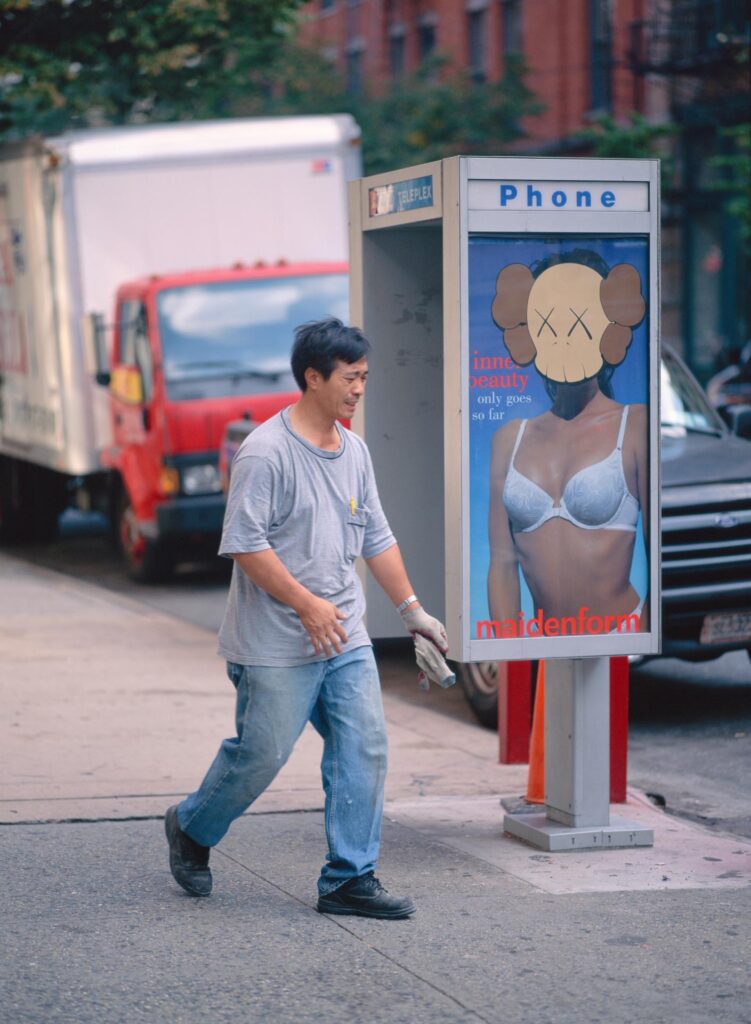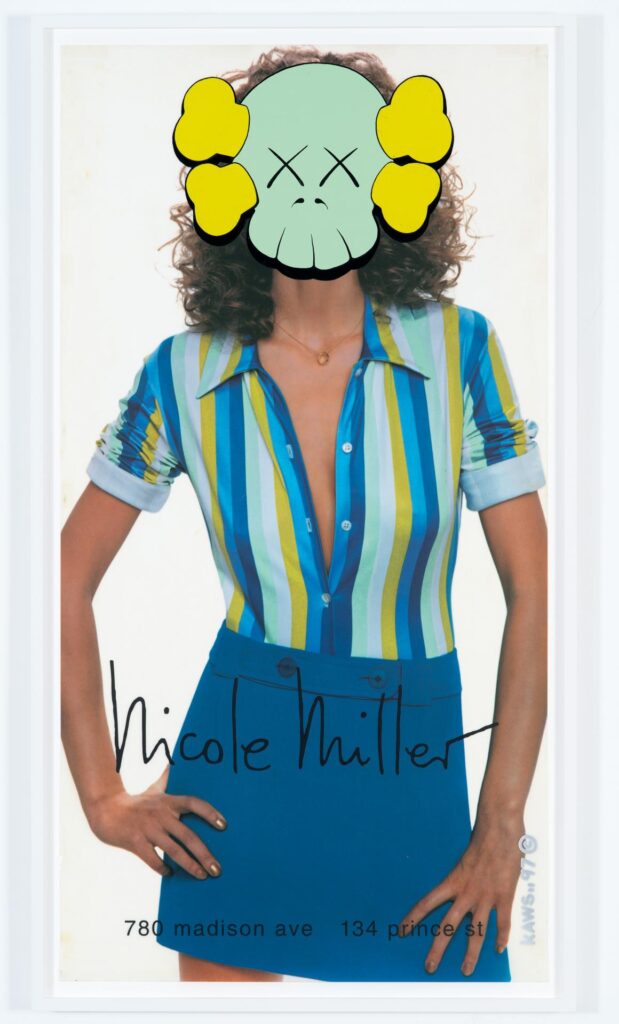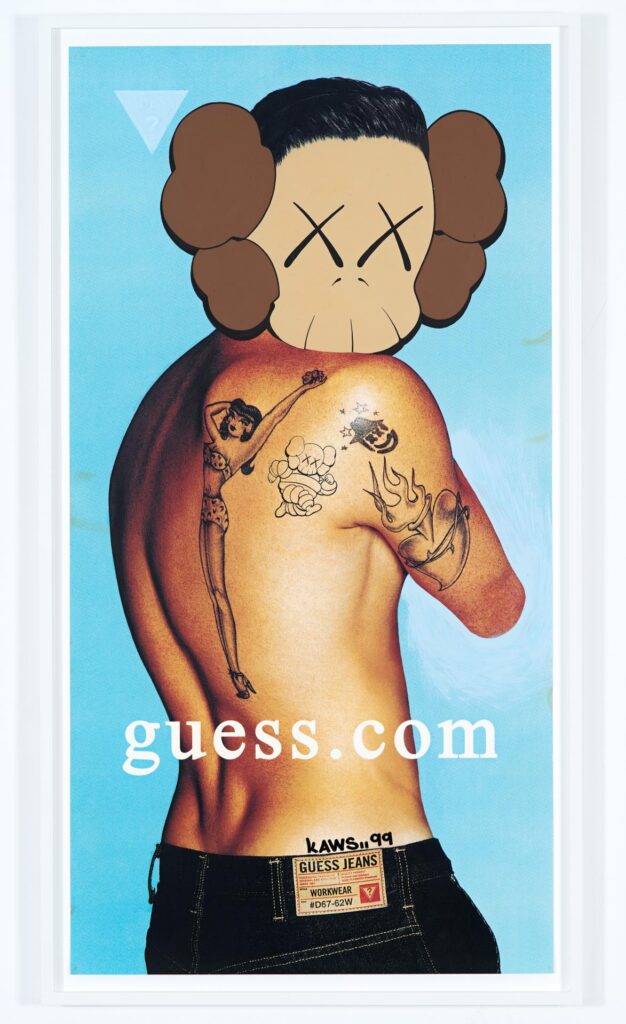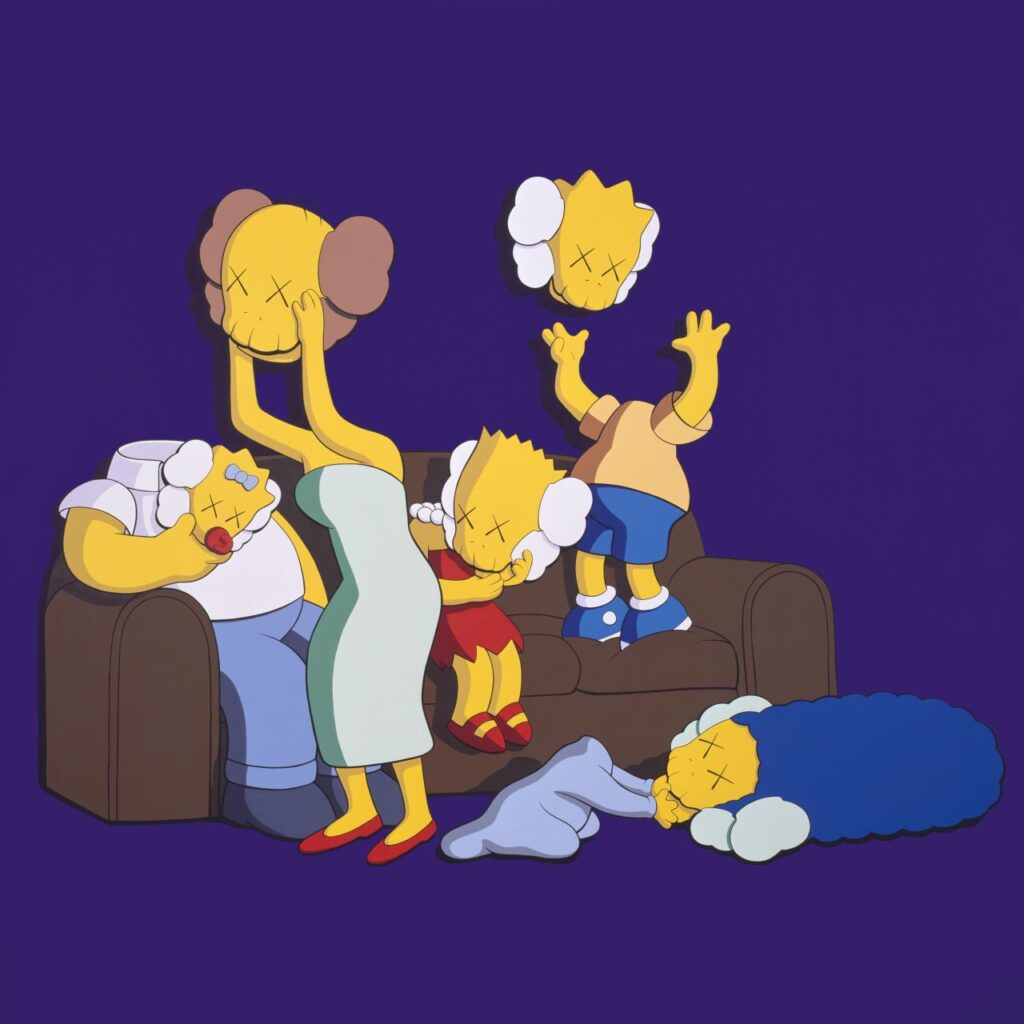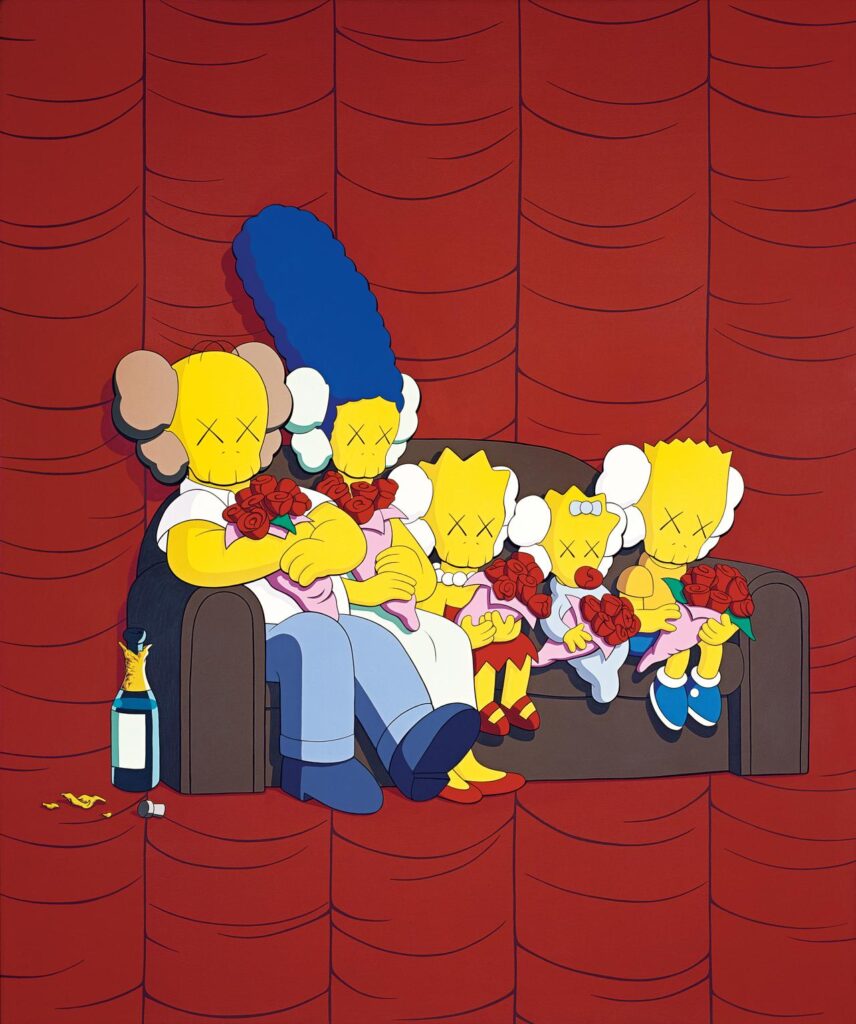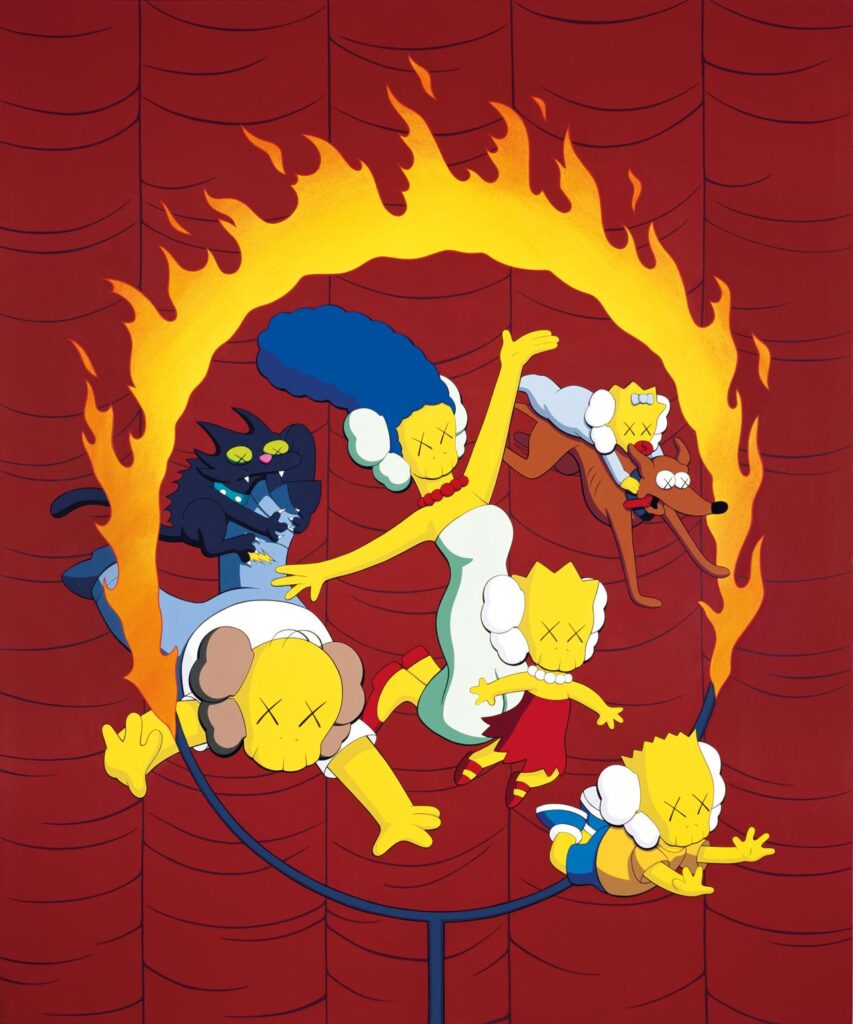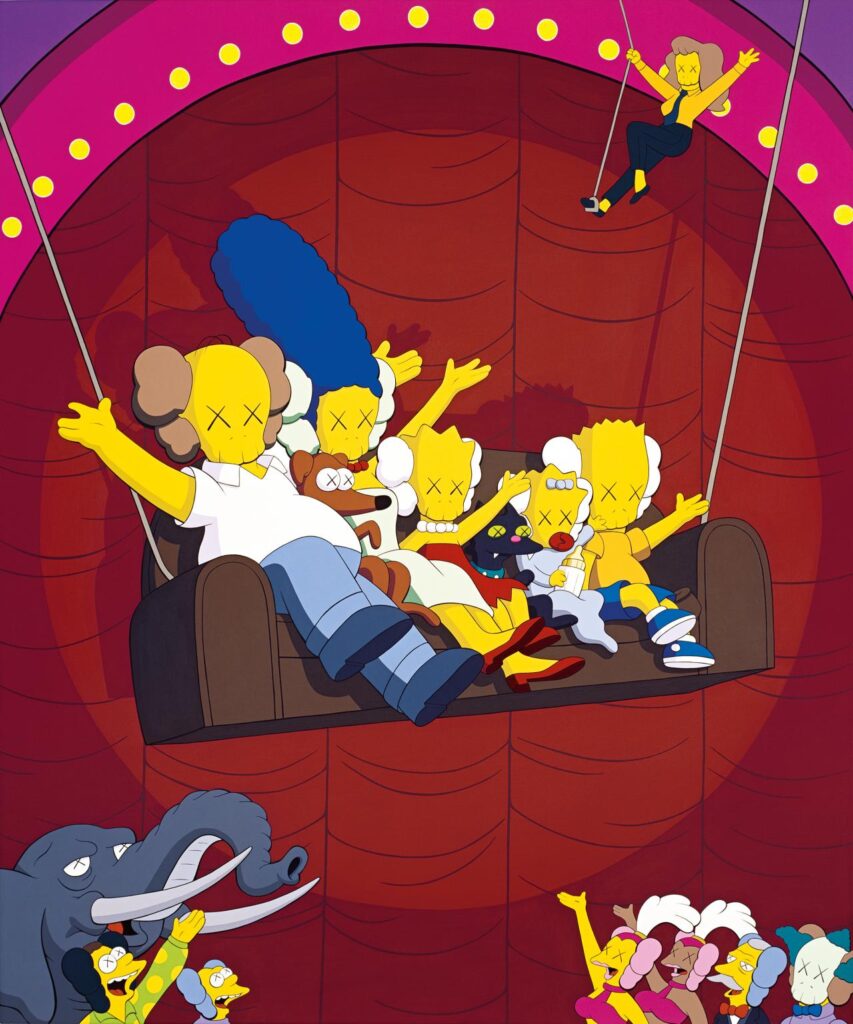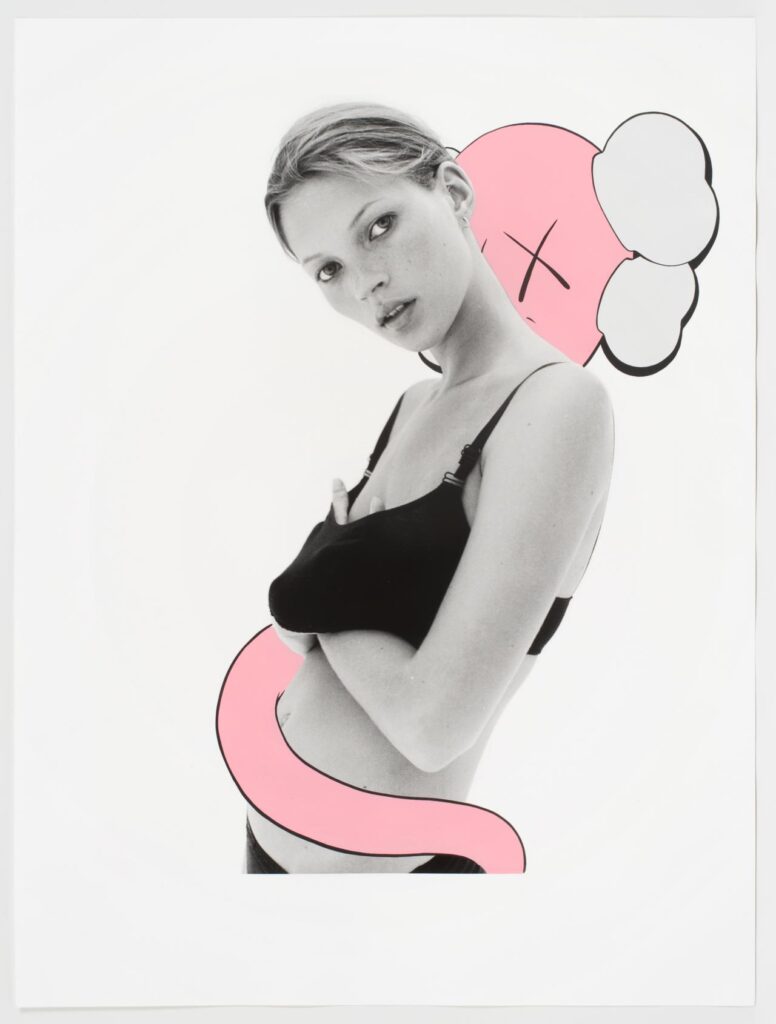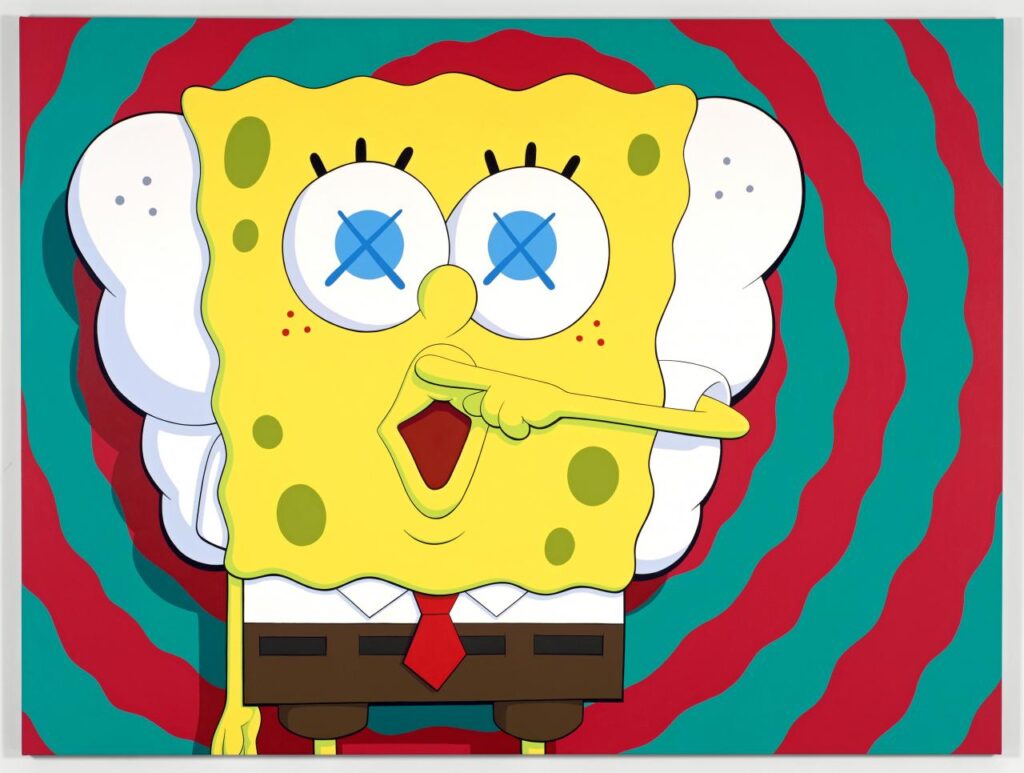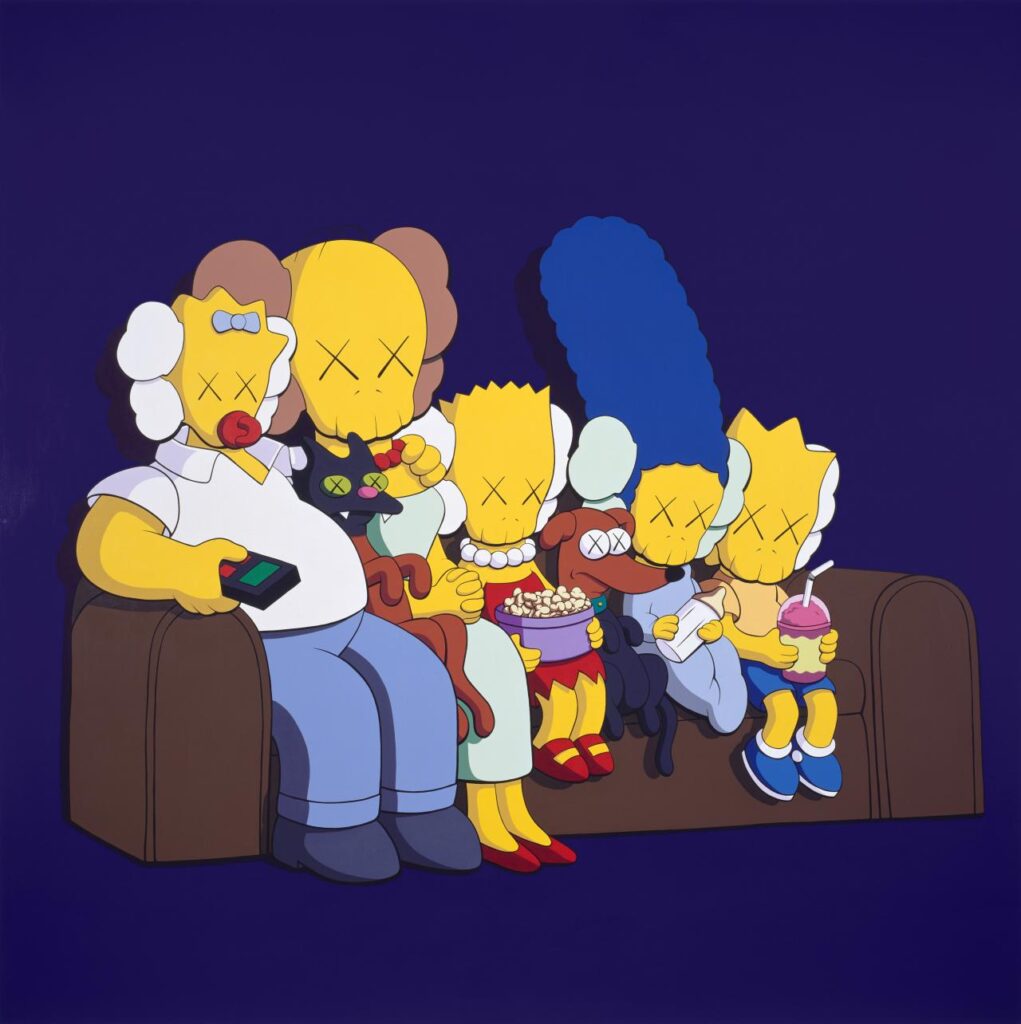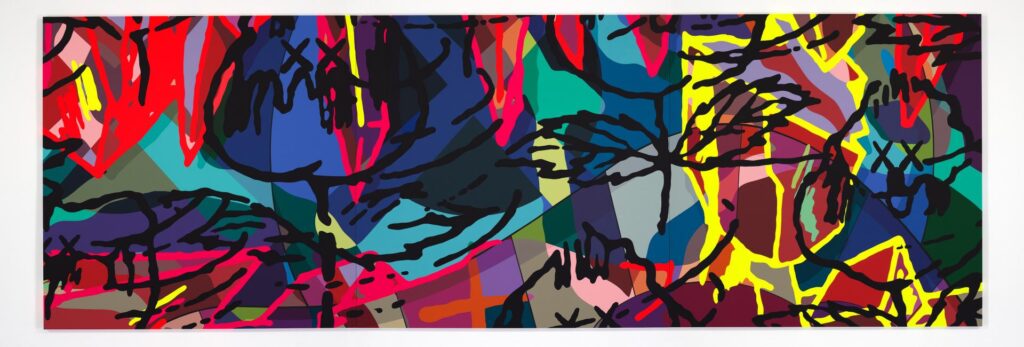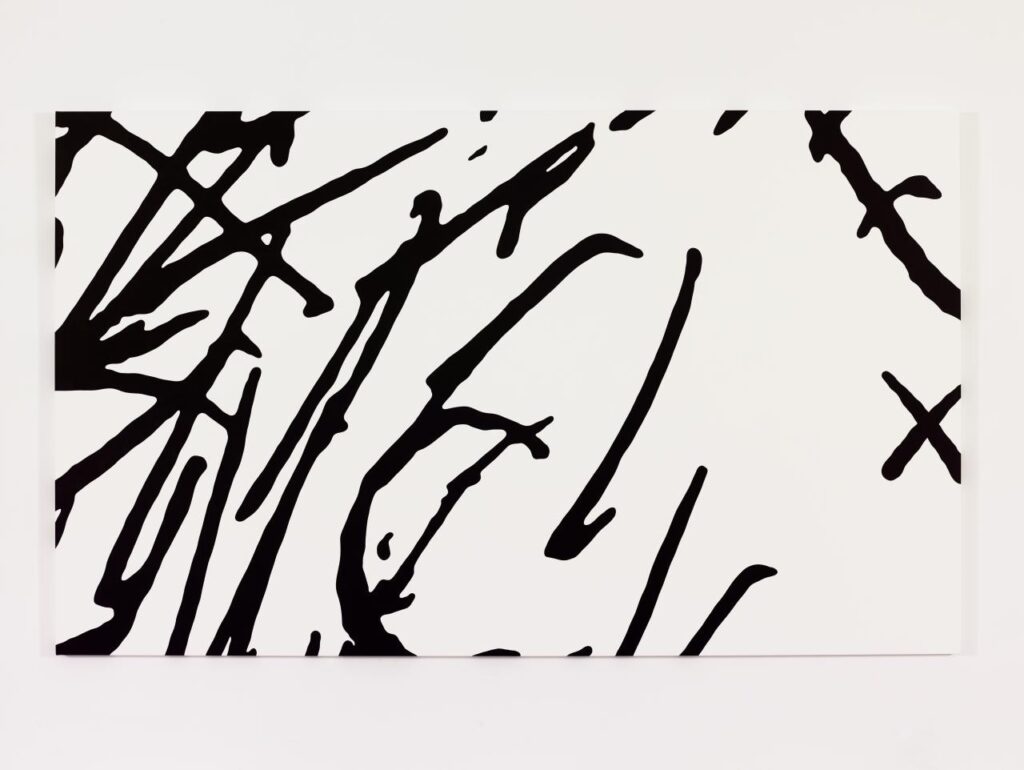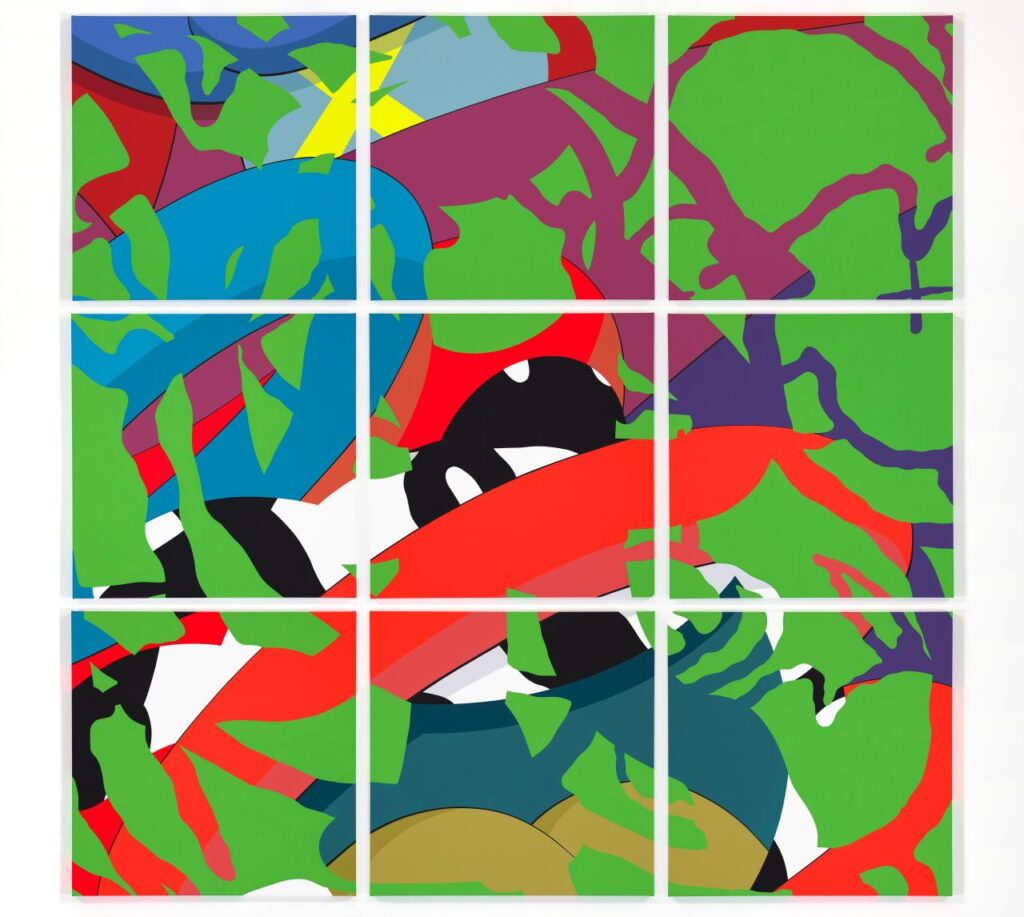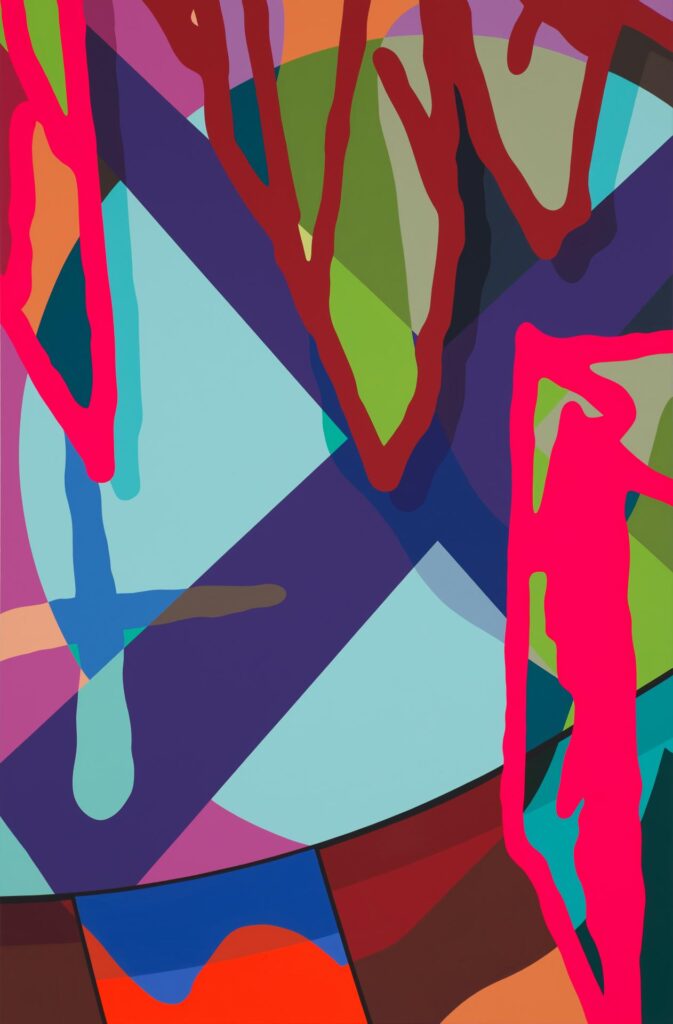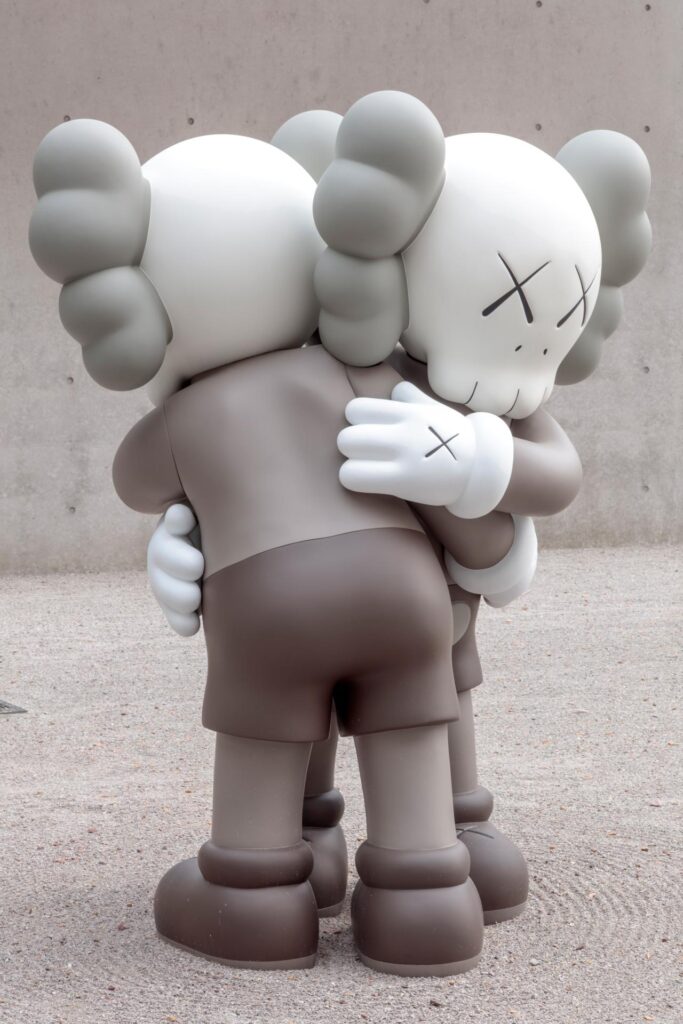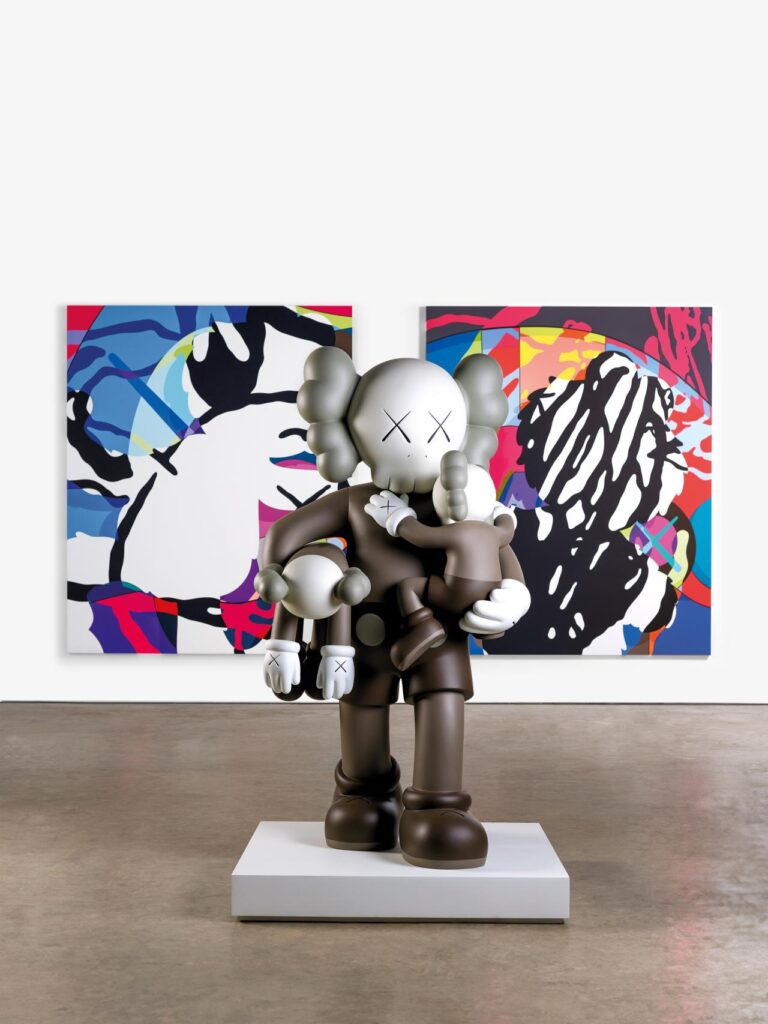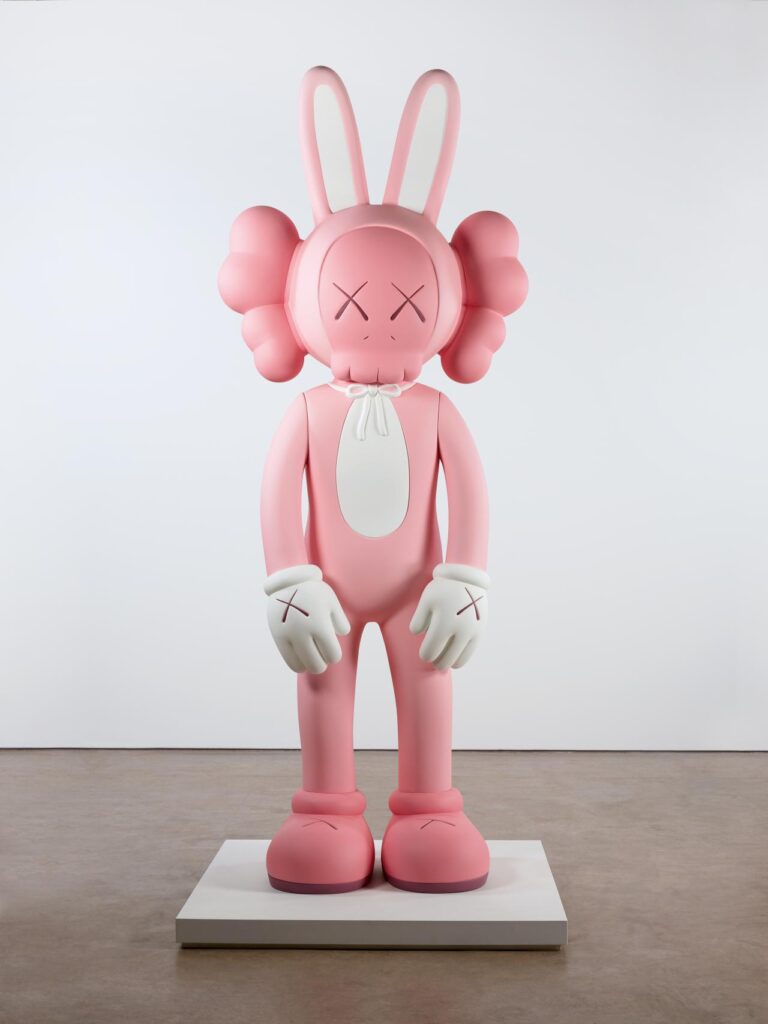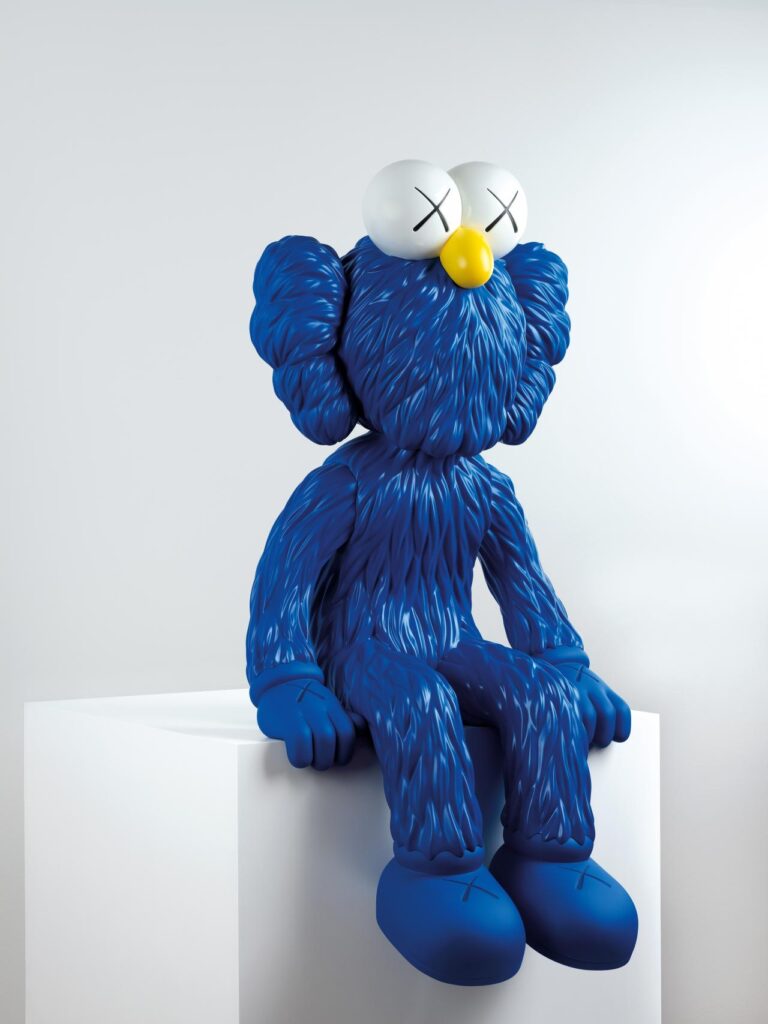Companionship in the Age of Loneliness
EXHIBITION THEMES
Public Interventions
Having produced large-scale graffiti pieces on walls, trains and billboards during the early 1990s, in 1996 KAWS began to work with the smaller-scale medium of advertising posters. Having been gifted a master key by a friend, he was able to unlock the advertising cabinets on the sides of bus shelters and telephone booths. KAWS would remove the posters and work on them in the studio, then return them to the public sphere once finished. Instead of creating hurried graffiti performed urgently in public with the fear of being caught, the artist could now spend hours labouring over each brushstroke and perfecting the work in his own time.
This new medium and method of painting afforded a more blurred line between original and intervention, which in turn created new tensions between the form and the content of the works; between cohabitation, celebration and critique. His introduced creatures and skulls began to have a fluid meaning when read with the original advertisement’s message.
Iconography
The skull-and-crossbones motif first appears in KAWS’s work in 1996 and, along with using Xs for eyes, was a strategy he continued when he began to use characters from comic strips and animated TV series as source material. In these works, KAWS adopts an artistic strategy of appropriation, as he did in his advertising interventions. This time, however, the paintings require creation from the ground up and the cartoon characters become the found object, in the vein of Marcel Duchamp’s readymades.
KAWS’s now-trademark materials and working method are apparent: the acrylic paint and the cel animator’s technique of painting by numbers from a defined palette to ensure consistency. As with the earlier bodies of work, there is an underlying desire, born out of writing, graffiti and street art, to find ways to make a mark, to see ourselves reflected within our cultural landscape.
Order and Chaos
In 2008 KAWS began to experiment with increasing the abstraction and fragmentation in his paintings, using the KAWSBOB figure as his subject. Created across square and round canvases, the paintings crop into the character’s facial features more and more until its expressions become increasingly anxious and distorted.
KAWS’s painting practice has since further embraced abstraction. This includes the introduction of multicoloured and multilayered camouflage-like patterning, reminiscent of Andy Warhol’s use of coloured camouflage in works such as Self-portrait no. 9, 1986 (in the NGV Collection).
Rendered at a scale comparable with that of European history painting, recent paintings by KAWS feature new elements such as abstractions of landscapes and an extended colour palette, including rich earthy tones, while remaining unified with the artist’s earlier practice through the signature Xs that appear throughout.
Companionship
KAWS first introduced COMPANION twenty years ago as a toy figure and has since created numerous iterations of the character in different colourways and scales ranging from human size to monumental sculptures. While COMPANION shares some elements with pre-existing cartoon characters – the gloves, shorts and shoes – KAWS gave it his trademark skull-and-crossbones head and crossed-out eyes.
The first of KAWS’s larger sculptures was produced in 2006 to greet visitors to a shop dedicated to his own fashion and design label, OriginalFake. COMPANION (ORIGINAL FAKE), 2011, with one half of its body dissected to reveal its internal anatomy.
In recent years, KAWS’s sculptures have become overtly emotional or empathic, often featuring singular figures slumped at the shoulders. TOGETHER, 2017 and ALONG THE WAY, 2013, are examples where the artist introduces the antidote to these overwhelming feelings, with a second COMPANION placing its arm over the other’s shoulders reassuringly. The second COMPANION provides companionship, making good on its name, as other characters in KAWS’s universe like BFF and ACCOMPLICE do too, in different ways.


